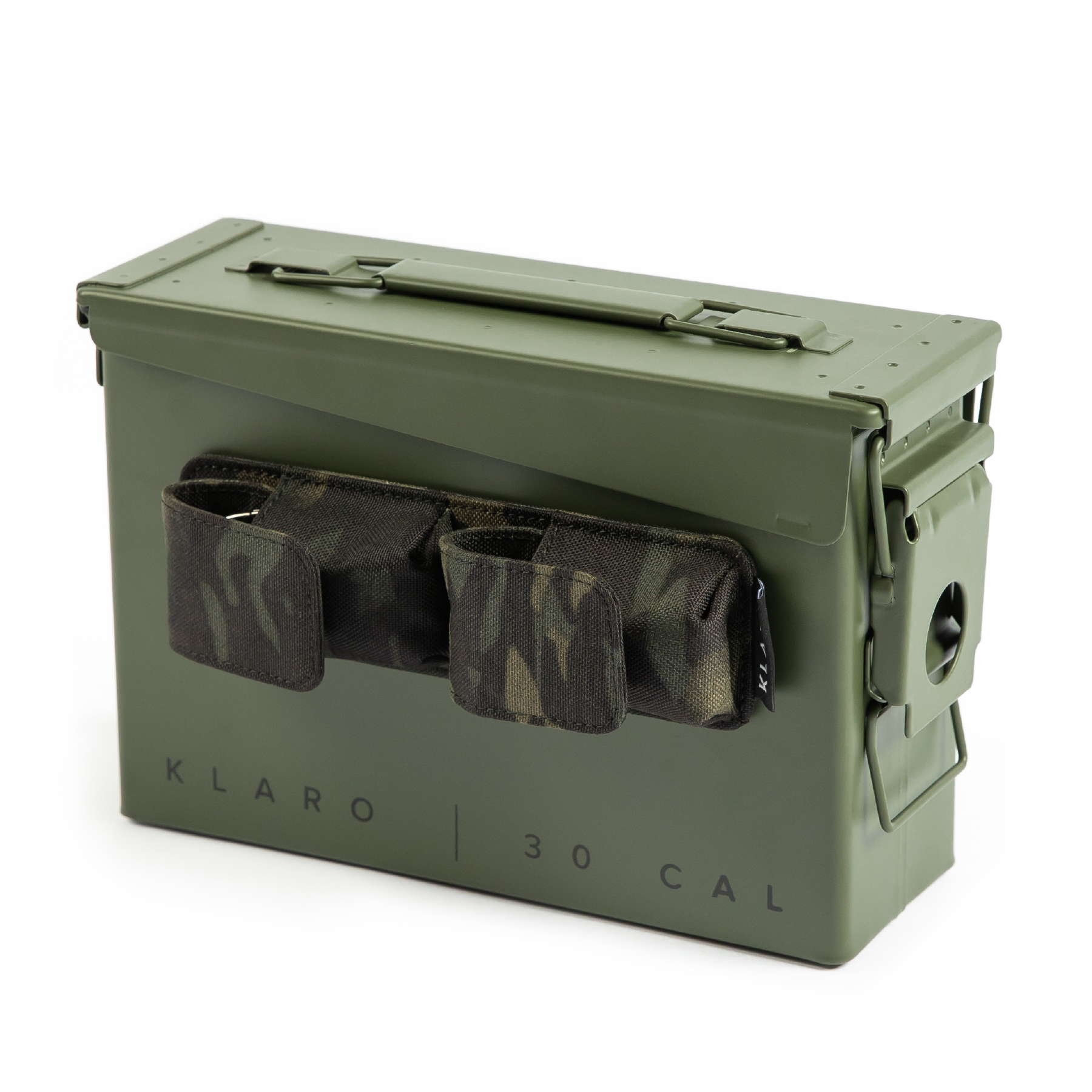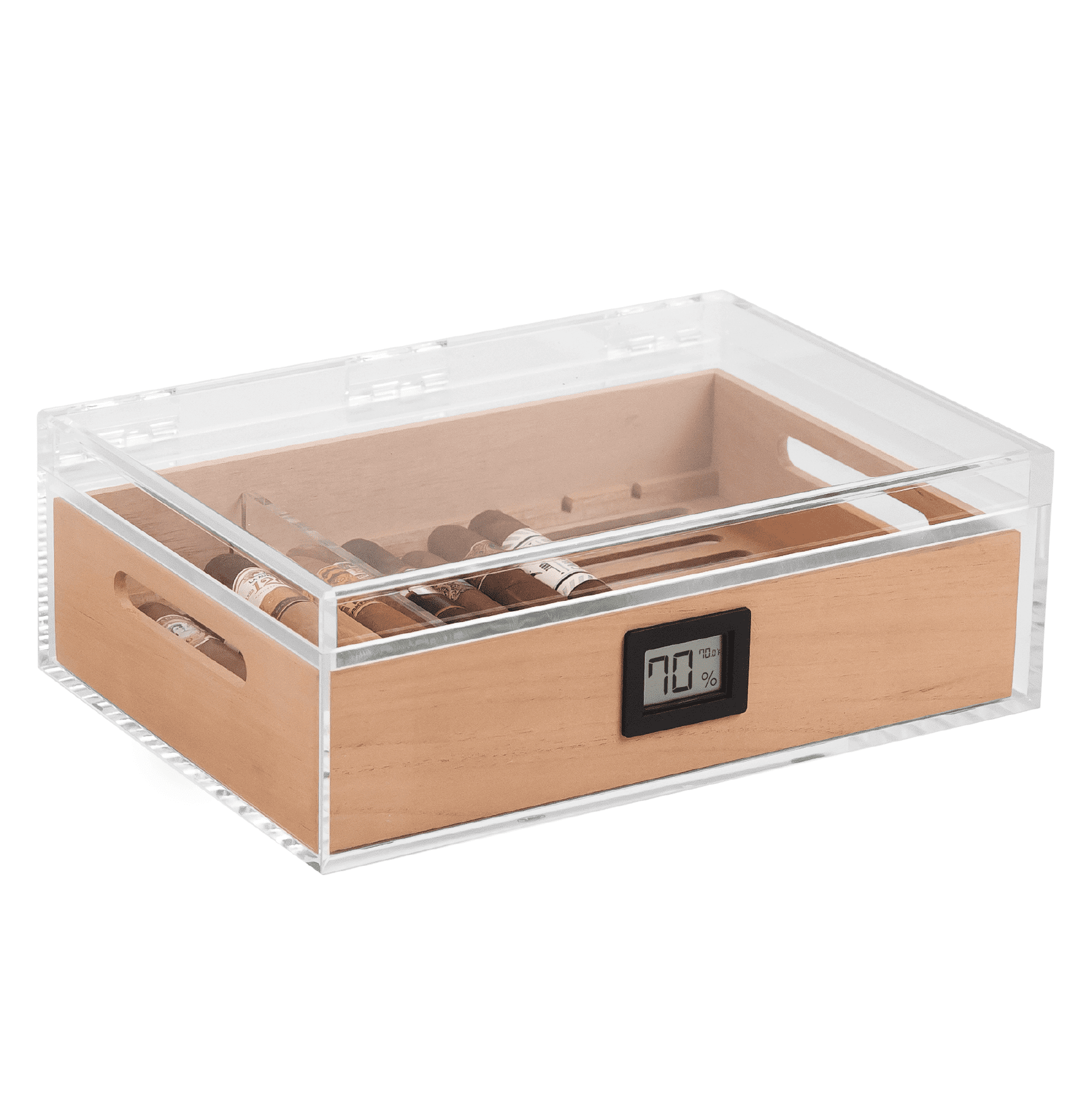There’s a common, almost cliche piece of advice you’ll hear when shopping for a humidor. “Buy bigger than you need.” Many offer that suggestion first before any other advice–before mentioning Spanish cedar, before talking about humidor humidifiers, before talking about the importance of a quality seal. Instead, you hear, “Buy a humidor larger than what you have cigars for.”
Now, there’s some nuance to this rule of thumb, and the sentiment is correct: your humidor won’t perform well when overfilled. And you should have room to expand your cigar collection. But because people are people, we often take this suggestion too far. It becomes the go-ahead to buy a humidor far larger than we need.
At best, you end up with a large, expensive cabinet humidor that takes up space but typically only holds 10 percent of its capacity. At worst? Your cigar collection could suffer and individual cigars lose their bouquet over time.
Here’s my straightforward take: more smokers should buy a small humidor–or a couple of small humidors–instead of buying a humidor cabinet or frigador. Overkill is real, and it takes logical restraint to stick to a humidor size that’s more than appropriate for your cigar collection.
What Is A Small Humidor?
You will hear that a small humidor constitutes any humidor that holds anywhere between 5-100 cigars–which leaves a lot of wiggle room. After all, worrying about protecting five cigars is a very different experience than caring for twenty times that.
For our purposes, we define small humidors by more than capacity. It’s also about the system: a small humidor is a self-humidified unit that doesn’t rely on an electric humidifier or air circulation system. In other words, a humidor with a passive humidification system that holds 100 or fewer cigars.
Some humidors included in the “small humidor category” include:
- Desktop humidors
- Glass top humidors
- Travel humidors
- Humidor jars
Most of Klaro humidors are glass top models with front-facing digital hygrometers. These features help reduce the frequency of opening the humidor, which allows for more consistent humidity control. And each humidor uses passive humidification in the form of the Hydro Tray, an effective way to control and maintain the optimal humidity levels for your cigar collection.
You might notice a pattern. Each design element of Klaro humidors is based on optimizing the climate inside, therefore better preserving your cigars. When we thought about the best way to store cigars, we knew that a smaller-capacity humidor would be the best choice for most private cigar collectors: easy to use, easy to control, and easy to monitor.
Why Two Can Be Better Than One
Moving into the mid-range size humidors, you grow in capacity but you also increase the real estate you have to monitor and control–and that’s easier said than done. Even with active humidification systems, there are a lot of variables that can happen inside a larger humidor that you won’t be able to control and monitor as well as in a small humidor.
I will go as far as to say that humidor cabinets, most frigadors, and walk-in humidors belong in commercial settings, not at home. Your humidor should alleviate your worry, not add to it. And when you store a higher volume of cigars, you run a higher risk if something goes wrong–a power outage, a broken humidifier, or poor air circulation.
Consider the main rationale for a mid-to-large size humidor–including frigadors, humidor cabinets, and walk-in humidors: You increase capacity. Instead of storing 100 cigars, you can store hundreds.
For high-volume collectors, this means they don’t have to worry about having enough space. But keep in mind, the more variability of cigars you collect, the more reason you’ll have to store them at different humidity levels. For example, if you are aging certain cigars, you’ll likely want them at a slightly lower humidity than those you plan to smoke in the next coming months.
That’s why owning two small humidors can be better than one. Not only can you separate cigars into two different humidity levels, but you can also divide them based on type, effectively reducing the risk of unwanted flavor blending. Store your medium and light cigars in one, store your bolder, full-bodied cigars in the other.
The Trouble with Humidor Drawers
More often than not, a humidor cabinet or walk-in humidor is just too much space for you to properly manage the correct humidity distribution. And I will use humidor drawers as an example. As soon as you include humidor drawers that create a physical, vertical barrier between different cigars, the more you increase the likelihood of dried-out cigars and uneven humidity distribution.
Many cabinet humidors include drawers, which conveniently provide separate storage compartments so you aren’t mixing or stacking cigars that shouldn’t cross-pollinate flavors and oils. But as you increase the barriers to airflow, you increase the risk of different humidification levels–and you might not know until it’s too late.
The cigar drawers stored close to the active humidification system will likely have a much higher humidity level, increasing the likelihood of mold or damp cigars. And the humidor drawer located furthest from the active humidifier will likely be the driest. To monitor everything and anything in between, you will want a humidor digital hygrometer on every level.
Humidor Wood and Spanish Cedar Ratios
We know that many humidors, large or small, aren’t built with sufficient Spanish cedar thickness. This makes it nearly impossible for your humidor to adapt to outside fluctuations in humidity, especially when the humidor is opened often. Humidor wood is integral to performance, and, without enough of it, your humidor won’t function properly.
The more space you have, the harder it becomes to manage relative humidity. The more open-air you have, the more Spanish cedar is needed to adequately store moisture content. This comes down to simple distribution. If a 12” x 9” size humidor requires approximately 3mm of Spanish cedar inlay, then consider the thickness needed for a humidor cabinet 4.5’ x 2’. And the number increases with a walk-in humidor.
Hygrometer Placement
A running theme here has been humidor real estate. Controlling humidity is just harder to control with more space–and harder to monitor. With larger humidors, the humidity will change based on where the humidification source is, with higher humidification levels closer to the source and lower further away, if the air isn’t circulated well. To monitor different locations in larger humidors, you’ll rely on multiple hygrometers or you won’t get accurate readings.
On Klaro humidors, the hygrometer is strategically placed where its sensors will provide the most accurate relative humidity levels for the entire box. That means you get the most representative reading, and there’s not much room–actually–for variation. Plus, you only have to worry about a single hygrometer reading–and with Klaro’s hygrometers, you know the seal is reliable, stable, and won’t be compromised by outside air.
Naturally Powered
Perhaps the most assuring factor about a small, passive humidification humidor is that it’s naturally powered. When made with quality materials, excellent craftsmanship, and a substantial amount of Spanish cedar, small humidors don’t require much maintenance or monitoring–or power. Simply set them up properly, and you don’t have much to worry about.
As soon as you add active humidification, temperature control, and electric elements, you have more to worry about. Not to mention the rare but realistic power outages that might affect your setup. With Klaro humidors, you still get the aesthetic of a high-class humidor–as well as some of the capacity–but with a humidor you can understand better and control more.
If you’re interested in learning more about humidors, check out our comprehensive guide to all-things-humidors, where we break down maintenance and care, functions, and best practices for humidor ownership.

















